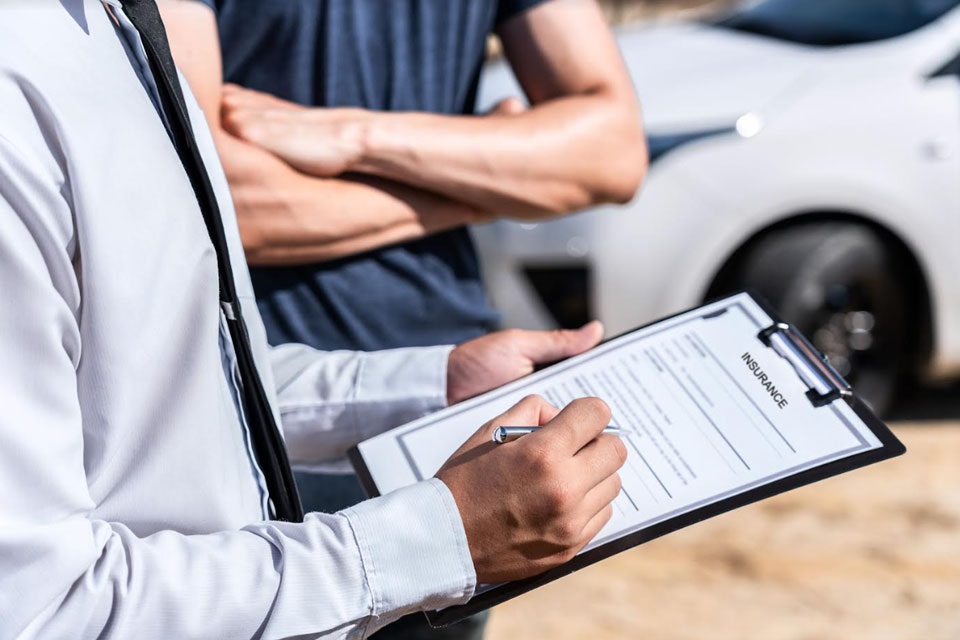Dealing with a car accident can feel like you’ve been thrown into a maze. Between police reports, medical bills, car repairs, lost wages, and negotiations with insurance companies, it’s easy to feel overwhelmed and lost.
In this article, we’ll walk you through the key steps so you can tackle the personal injury claims process with confidence.
Here’s what we’ll cover:
- Why promptly reporting your accident matters
- What evidence to collect from the scene
- How to file an insurance claim after a crash
- Negotiating with claims adjusters
- Getting fairly compensated for your injuries and losses
Let’s get started with step one – contacting the authorities about your accident.
Step 1: Report the Accident Immediately
In the stressful aftermath of a collision, reporting the incident to the police might be the furthest thing from your mind. But this crucial first step lays the foundation for your injury claim.
Here are three reasons why an official accident report matters:
First, the report creates a formal record of the crash, which can be used as evidence for insurance and legal claims. The officer who responds can interview witnesses while their memories are fresh and document critical evidence like weather and road conditions.
Second, the police report can help establish fault. If the officer determines one driver caused the wreck through negligence like speeding or drunk driving, this finding can support holding that motorist liable.
Finally, some insurance companies may try to dispute or deny your injury claim if you lack a police report. So, getting an official report strengthens your case.
Tip: If the police do not come to the accident scene, go to the nearest station to file a report yourself ASAP.
Step 2: Collect Evidence From the Scene
Those critical minutes after a collision present an opportunity to gather valuable proof to show exactly what happened. Here are some tips on evidence to collect:
- Take photos/video of damage to vehicles, injuries, debris on the road, and anything else relevant to how the crash occurred.
- Write down details like the date, time, weather and road conditions, street names, and any factors that may have caused the wreck.
- Get contact information for any witnesses, including their names, phone numbers, and addresses. Witness statements can provide crucial corroboration later.
- Save medical reports and doctor notes documenting your injuries. These will help verify treatment costs later.
- Keep records of accident-related expenses like medical bills, car repairs, and lost wages due to missed work.
Documenting evidence thoroughly gives you what you need to prove your losses and show the insurance company the full impact of the crash.
Step 3: Submit Your Insurance Claim
Once you have an official accident report and evidence collected, it’s time to contact your insurance provider to file a claim. Here are some tips for starting the claims process:
- Call your insurer as soon as possible to inform them you were in an accident and need to open a claim.
- Provide details about when and how the crash happened, the parties involved, your injury, and the extent of vehicle damage.
- Submit the evidence you gathered, like photos, doctor reports, and repair estimates.
- Review your policy to understand what coverages and limits apply to accident-related losses.
- Cooperate fully with the claims adjuster’s investigation and answer any questions.
Getting your claim started promptly is key since insurance companies are skeptical of delays. Be as detailed as possible and submit all relevant proof to get your claim rolling.
Step 4: Communicate with the Insurance Adjuster
Now comes the tricky part – negotiating with the often tough insurance claims adjuster assigned to your case. Here are some tips:
- Be responsive to all requests for information from the adjuster and provide it in a timely manner.
- Ask questions if you are unsure of anything related to the claims investigation process. Don’t be afraid to speak up.
- Maintain records of all correspondence with the adjuster, including emails, letters, and notes from phone calls.
- Don’t rush into signing any release or settlement agreement before reviewing it closely and consulting an attorney if needed.
Remember, the adjuster’s goal is to settle claims for as little money as possible. So be cooperative, but protect yourself by responding carefully and keeping thorough records.
Step 5: Receive Your Settlement
Once the adjuster finishes investigating, they will extend a settlement offer to resolve your claim. Here’s how to successfully navigate settlement:
- Negotiate respectfully if the initial offer seems too low based on your damages and losses. Politely push back with evidence supporting a higher amount.
- Consult an attorney if you and the adjuster cannot agree on a fair settlement amount. They can handle negotiations on your behalf.
- Carefully review any settlement agreement before signing it to ensure it covers everything you are entitled to.
- Use the settlement to pay for medical bills, car repairs, lost wages, and other accident-related expenses once an agreement is reached.
Settling your claim is the goal, but don’t accept less than you deserve. Being prepared to negotiate or get legal help can make the difference in getting fully compensated.
What If Your Claim Is Denied? Don’t Panic, Take Action
One of the most frustrating outcomes of filing an insurance claim is having it denied. But there are still steps you can take to get the compensation you deserve:
- Find out exactly why your claim was denied. Common reasons include delays in reporting, insufficient evidence of losses, or disputes over who was at fault.
- Present additional evidence to address any gaps the adjuster says exist in your claim. For example, providing more proof of medical treatment costs.
- Appeal the denial according to your insurer’s procedures. Point out any erroneous reasons they gave for denying the claim.
- Consult an attorney about your legal options, which could include suing the insurer over a wrongful denial of your valid claim.
Don’t let an initial claim denial discourage you. By understanding the reasons and taking the right steps, you can still succeed in recovering damages.
Why You Need an Attorney’s Help After a Car Accident
If this all seems complex and overwhelming, that’s normal! The insurance claims process is purposely convoluted and designed to benefit insurers over injured victims.
That’s why working with an experienced personal injury attorney is so crucial after a car wreck. Here are some key benefits:
- We handle communications with insurers so you can focus on recovery, not paperwork.
- We thoroughly investigate your accident to build the strongest case proving the at-fault driver’s liability.
- Our negotiation skills maximize your compensation and prevent low-ball settlement offers.
- We’re ready to go to court to fight for your rights if the insurance company refuses to pay fairly.
Don’t go it alone against the insurance giants. With an attorney guiding you, getting the maximum settlement you deserve becomes a reality.
Fight For the Compensation You Deserve
If you or a loved one has been injured in a car accident, you don’t have to face the insurance claims process alone. The experienced attorneys at Held, Held & Held are available to help. For years, their team has successfully helped injury victims in Brooklyn and across New York get the maximum compensation they deserve.
Don’t wait – contact Held, Held & Held now, and let us handle negotiations with the insurance companies while you focus on your recovery.





